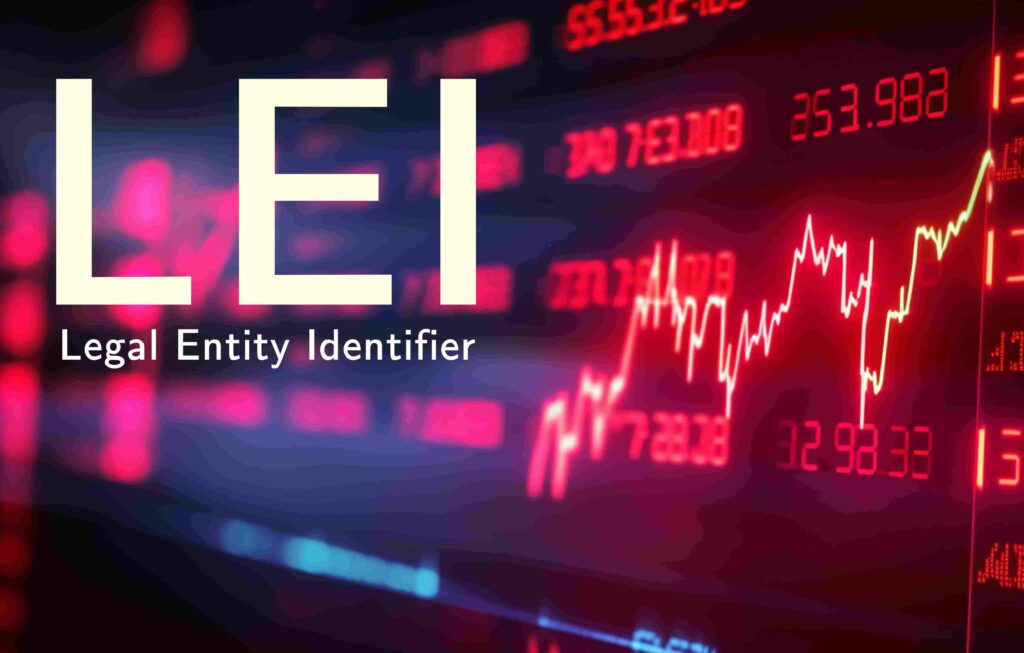In the ever-evolving landscape of global finance, the identification and management of counterparties have become crucial to ensuring the stability and transparency of capital markets. The Legal Entity Identifier (LEI) has emerged as a pivotal tool in this context, not only serving as a reliable means of counterparty identification but also adding substantial business value. This article explores how the LEI system is transforming capital markets, fostering trust, reducing risks, and creating a foundation for enhanced operational efficiency.
Role of LEIs in Counterparty Identification
In capital markets, understanding who you are dealing with is fundamental to mitigating risk. The LEI system provides a globally recognized standard for identifying legal entities engaged in financial transactions. Each LEI is a unique 20-character code that connects to key reference information, enabling clear and consistent identification of parties involved in transactions. This reduces the chances of errors and discrepancies, which can lead to costly misunderstandings or fraudulent activities.
Enhancing Transparency and Trust
One of the significant contributions of the LEI system is the enhancement of transparency across financial markets. By providing a standardized identifier for legal entities, the LEI facilitates the aggregation of data across multiple jurisdictions, enabling regulators and market participants to gain a clearer view of the global financial ecosystem. This transparency is vital for monitoring systemic risks and ensuring that financial institutions comply with regulatory requirements.
LEIs and Risk Mitigation
Risk management is at the core of capital market activities. The use of LEIs allows for more accurate risk assessment by providing comprehensive information about the counterparties involved in transactions. This information helps financial institutions to better evaluate the creditworthiness and reliability of their counterparties, thereby reducing the likelihood of defaults and other risk-related issues. Moreover, LEIs play a crucial role in identifying interconnectedness between entities, which is essential for understanding and managing systemic risk.
Operational Efficiency and Cost Savings
The Legal Entity Identifier (LEI) system, initially implemented to enhance transparency and reduce risk in financial markets, offers significant advantages beyond risk mitigation. One of the most notable benefits of LEIs is their contribution to operational efficiency in capital markets. By providing a standardized method for identifying legal entities involved in financial transactions, LEIs streamline a variety of processes, resulting in substantial time and cost savings for financial institutions and market participants.
- Streamlining Entity Identification
In the global financial landscape, identifying and verifying legal entities has traditionally been a time-consuming and resource-intensive task. The lack of a universal standard often led to inconsistencies, errors, and delays in processing transactions. LEIs address this challenge by offering a unique, standardized identifier for each legal entity, which can be used universally across jurisdictions. This standardization simplifies the process of entity identification, reducing the need for repetitive and manual checks, which can be both costly and prone to error.
- Reducing Due Diligence and Compliance Costs
Compliance with regulatory requirements is a critical component of financial operations, but it can also be one of the most resource-intensive. Financial institutions are required to conduct thorough due diligence to verify the identity and legitimacy of their counterparties. Before the adoption of LEIs, this process often involved extensive data gathering and verification, consuming significant time and resources.
With LEIs, financial institutions can more quickly and accurately identify legal entities, thereby streamlining the due diligence process. The unique identifier allows for rapid access to essential information about an entity, including its ownership structure and legal status. This not only speeds up the compliance process but also reduces the likelihood of errors, leading to more efficient operations and lower compliance costs.
- Enhancing Trade Data Reconciliation
In addition to simplifying entity identification and compliance, LEIs play a crucial role in the reconciliation of trade data. Financial markets involve vast volumes of transactions, each requiring accurate documentation and record-keeping. Discrepancies in trade data can lead to delays, financial losses, and increased operational risk.
LEIs simplify the reconciliation process by providing a consistent reference point for all entities involved in a transaction. This reduces the chances of mismatches and errors in trade records, ensuring that data is consistent across different systems and platforms. The result is faster and more reliable trade settlement, which not only enhances market efficiency but also contributes to overall financial stability.
- Significant Cost Savings
The operational efficiencies gained through the use of LEIs translate directly into cost savings for financial institutions. By reducing the time and resources required for entity identification, due diligence, compliance, and trade data reconciliation, LEIs help financial institutions lower their operational costs. These savings can be particularly significant for large institutions that engage in a high volume of transactions across multiple jurisdictions.
The Business Value of LEIs
The business value of LEIs extends beyond regulatory compliance and risk management. By providing a common standard for entity identification, LEIs enable financial institutions to better understand their business relationships and market positions. This, in turn, supports strategic decision-making and fosters a more competitive and resilient financial ecosystem. As capital markets continue to evolve, the role of LEIs in driving business value is likely to become even more pronounced.
The Future of LEIs in Capital Markets
Looking ahead, the use of LEIs is expected to expand as more jurisdictions and market participants recognize their benefits. Innovations in financial technology, such as blockchain and artificial intelligence, are likely to further enhance the utility of LEIs, enabling more sophisticated analysis and decision-making. As the global financial system becomes increasingly interconnected, the importance of a universal identifier like the LEI will only grow.
Conclusion
The LEI system is a cornerstone of modern capital markets, providing a reliable means of counterparty identification while delivering significant business value. By enhancing transparency, reducing risks, and improving operational efficiency, LEIs are helping to create a more stable and trustworthy financial environment. As the adoption of LEIs continues to rise, their impact on the global financial system will undoubtedly become even more profound, cementing their role as a key driver of market integrity.



